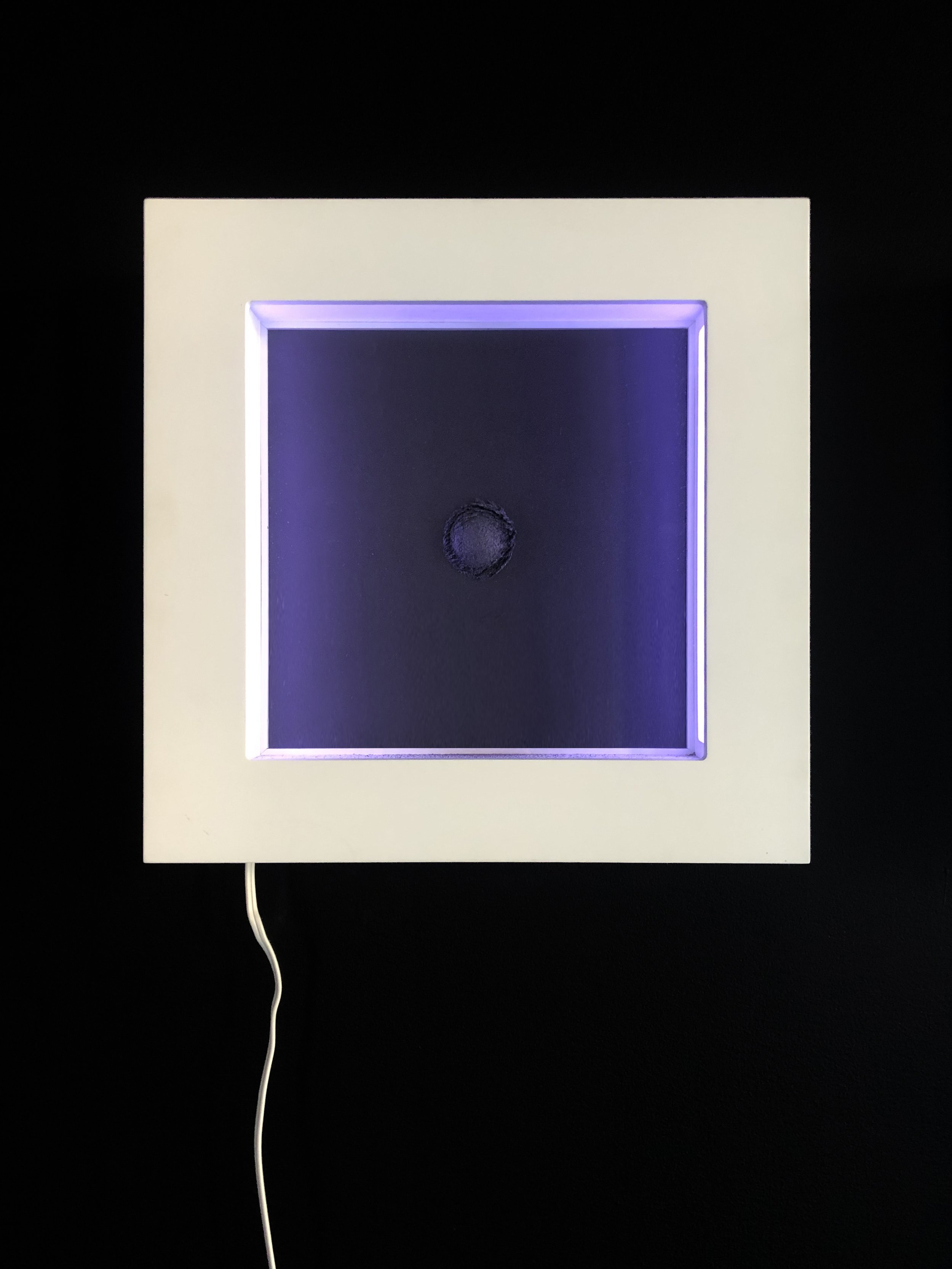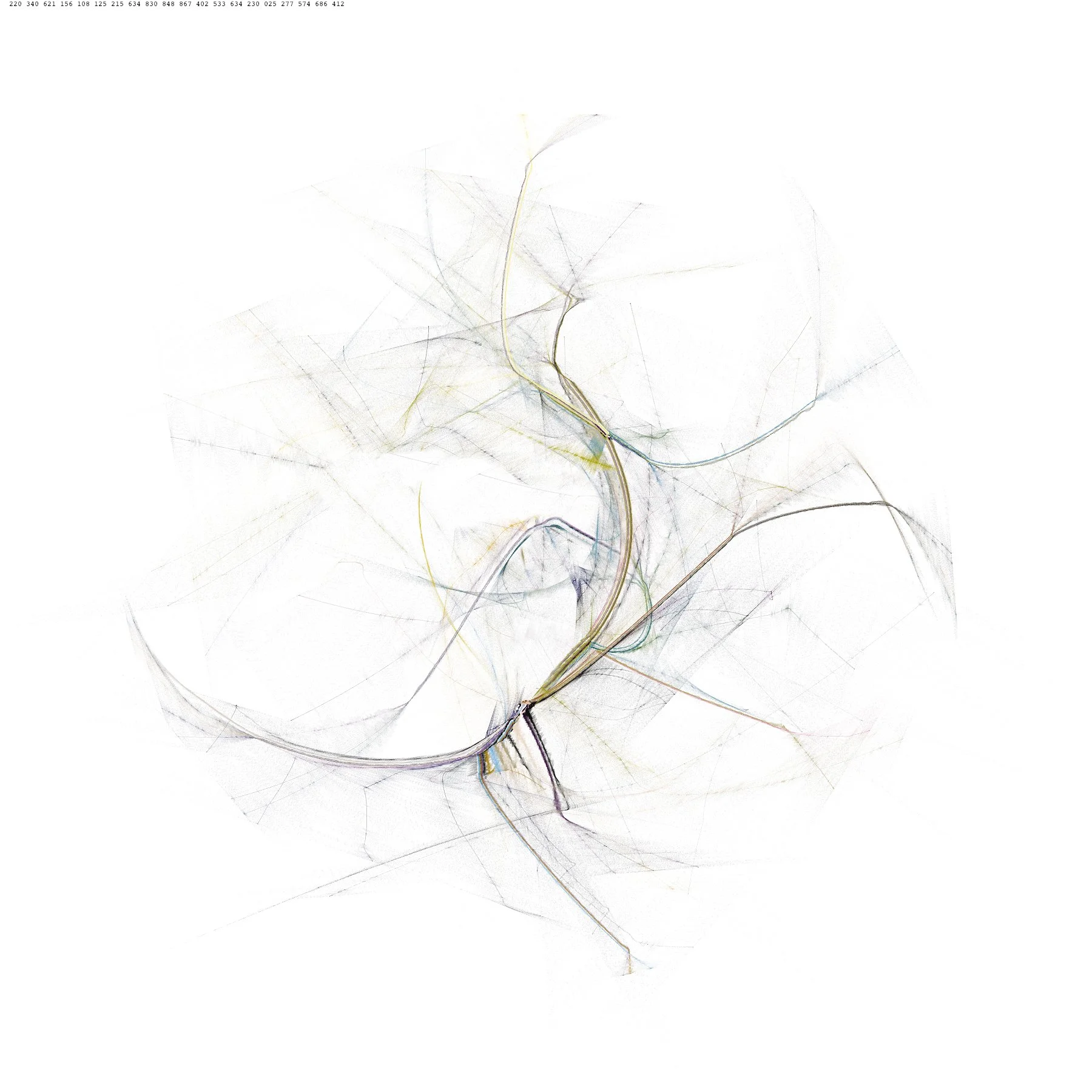Juan Cortés is a Colombian artist who uses research and interdisciplinary processes to explore the connections between art, science and educational processes. His practice takes on multiple forms such as installation works, audio recordings, and concert pieces.
Cortés’ interest in sound and natural forces act as the basis and foundation of his art, especially through interactions between disciplines and techniques, and research-led practices. He uses his scientific upbringing and natural artistic abilities to break down complicated theories, happenings and phenomena into understandable, and often hands-on, installations and machinery, or “translation machines”.
Designed and produced in a lab or studio, these machines have a highly scientific appearance through the use of materials like TVs, computers, robots, acoustic levitators and LED lights. They interpret phenomena like atmospheric disturbances and solar flares, or concepts like dark matter and black holes, by processing coded algorithms, scientific data, sound and light waves.
Through his work, Cortés aims to bridge the gap between the realm of science and humanity. The result is intelligible art on a micro scale that is arresting and unique.
Born in 1989, Juan Cortés lives and works in Bogotá, Colombia as an audiovisual artist and lecturer in Art and Audiovisual Media at the University of Los Andes, Colombia. Cortés has exhibited both nationally and internationally, performing in institutions such as the Museum of Modern Art (MoMA), New York; Center for the Arts (CMA), Madrid, Spain; Bilbao Exhibition Center, Spain; Fridman Gallery, New York; NYC Creative Tech Week; and Centquatre-Paris, France. He is cofounder and curator of the RADAR Video Art Festival and the SATELLITE Festival of Sound Art, and regularly works with the Hyphen-Hub space for artistic and community creation. He is the recipient of numerous awards such as the VII Bogotá Prize for Alternative Art Spaces in Colombia and the prestigious PRAC Grant of the Ministry of Culture of Colombia. In 2016, he received an Honorary Mention in the CERN Collide International Prize, which is awarded as part of CERN’s Art and Science program, Art at CERN.

JUAN CORTES: MAGNETIC BOX I

JUAN CORTES: MAGNETIC BOX II

JUAN CORTES: STUDY OF POSSIBLE UNIVERSES I, 2020, hand-colored algorithm, 12 3/4 x 19 5/8 in. 32.4 x 49.8 cm.

JUAN CORTES: STUDY OF POSSIBLE UNIVERSES II, 2020, hand-colored algorithm, 12 3/4 x 19 5/8 in. 32.4 x 49.8 cm.

JUAN CORTES: STUDY OF POSSIBLE UNIVERSES III, 2020, hand-colored algorithm, 12 3/4 x 19 5/8 in. 32.4 x 49.8 cm.

JUAN CORTES: STUDY OF POSSIBLE UNIVERSES IV, 2020, hand-colored algorithm, 12 3/4 x 19 5/8 in. 32.4 x 49.8 cm.

JUAN CORTES: NATURAL FORCE IV, 2016, print on hahnemuhle paper with charcoal intervention, 23.62 x 23.62 in. 60 x 60 cm. Edition of 3

JUAN CORTES: NATURAL FORCE V, 2016, print on hahnemuhle paper with charcoal intervention, 23.62 x 23.62 in. 60 x 60 cm. Edition of 3

JUAN CORTES: THE VIEW FROM NOWHERE Variation 3

JUAN CORTES: Pendulum

JUAN CORTES: THE VIEW FROM NOWHERE Variation 2

JUAN CORTES: THE VIEW FROM NOWHERE Variation 4, 3


JUAN CORTES: THE VIEW FROM NOWHERE Variation 5, 2

